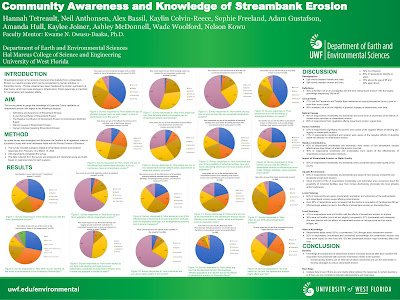Tuesday, October 30, 2018
GIS 4035 - Module 8 - Thermal and Multispectral Imagery
For this week's Module 8 we were asked to analyze two composite satellite images at different RGB and landsat band setups in order to highlight specific features. The composite image that I chose was the EMTcomposite.img created in module 8 and the
feature I chose to identify was the two fires located in the NE corner of the
original EMTcomposite.img. I chose 4 data frames to show 4 different image
configurations. These 4 data frames represent, in my opinion, the most
effective ways to spot a forest fire via satellite imagery. The configuration
of the 4 data frames is as following: RGB 123 - True color image for
comparison, RGB 137 – fire appears brighter and more vivid, Landsat Band 1 –
Grey Scale – shows brighter areas, Landsat Band 1 – Color Gradient – shows
brighter areas as red. Landsat band 1 was chosen as it is the only band that
effects the fire. This may be in part due to the fires intense brightness and
its physical appearance being higher in elevation when compared to surrounding
ground elevation.
Subscribe to:
Post Comments (Atom)
Spring 2023 semester wrap up
The spring 2023 semester at UWF has been an eventful one in which I finalized the requirements for my bachelors of science in natural scien...

-
Mastering multiple platforms will result in a more precise outcome. In this weeks lab we were tasked with creating a top10 list of our cho...
-
For this weeks Module 7 we were tasked with creating a choropleth map for wine consumption in Europe. A choropleth map is a themetic map in ...
-
For this weeks Module 6, we were tasked with displaying data for Dade County, Florida in four different classification methods for symbology...




No comments:
Post a Comment